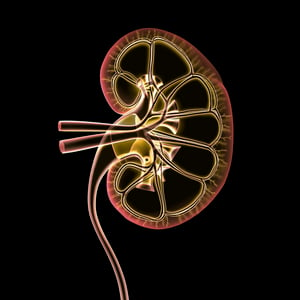End-Stage Renal Disease in the US (USRDS) 2018
By Susan Eymann, MS26 Aug 2019
(Gleaned from the 2018 USRDS Annual Data Report: Volume II: Chapter 1)
- In 2016, there were 124,675 newly reported cases of end-stage renal disease (ESRD).
- The age-sex-race standardized incidence rate of ESRD in the United States rose sharply in the 1980s and 1990s, leveled off in early 2006, and has declined slightly since its peak in 2006.
- In 2016, ESRD incidence rate ratio, compared with Whites, was 2.9 for African
 Americans, 1.2 for American Indians/Alaska Natives, and 1.1 for Asians. All these represent reductions in the relative rate of ESRD for these minorities compared to Whites over the past 16 years. The incidence rate ratio for Hispanics versus non-Hispanics was 1.3.
Americans, 1.2 for American Indians/Alaska Natives, and 1.1 for Asians. All these represent reductions in the relative rate of ESRD for these minorities compared to Whites over the past 16 years. The incidence rate ratio for Hispanics versus non-Hispanics was 1.3. - Based on 2013 data, the lifetime risk of being diagnosed with ESRD from birth was 4.0% in males and 2.9% in females. Among males, the lifetime risk ranged from a low of 3.4% in Whites to a high of 8.1% in African Americans; in females, it ranged from 2.3% in Whites to 6.8% in African Americans.
Prevalence
- On December 31, 2016, there were a total of 726,331 prevalent cases of ESRD or 2,160.7 per million in the U.S. population.
- The number of prevalent ESRD cases has continued to rise by about 20,000 cases per year.
- Compared to Whites, ESRD prevalence in 2016 was about 9.5 times greater in Native Hawaiians/Pacific Islanders, 3.7 times greater in Blacks, 1.5 times greater in American Indians/Alaska Natives, and 1.3 times greater in Asians.
Characteristics of Incident (New) ESRD Cases
- In 2016, 35.4% of incident ESRD patients received little or no pre-ESRD nephrology care.
- Mean eGFR at initiation of dialysis in 2016 was 9.7 ml/min/1.73 m2, down from a peak of 10.4 in 2010. The percentage of incident ESRD cases starting with eGFR ≥10 ml/min/1.73 m2 rose from 12.9% in 1996 to 42.6% in 2010 but decreased to 38.6% in 2016.
Treatment Modalities
- In 2016, 87.3% of incident individuals began renal replacement therapy with hemodialysis (HD), 9.7% started with peritoneal dialysis (PD), and 2.8% received a preemptive kidney transplant.
- On December 31, 2016, 63.1% of all prevalent ESRD patients were receiving HD therapy, 7.0% were treated with PD, and 29.6% had a functioning kidney transplant. Among HD cases, 98.0% used in-center HD, and 2.0% used home HD.




